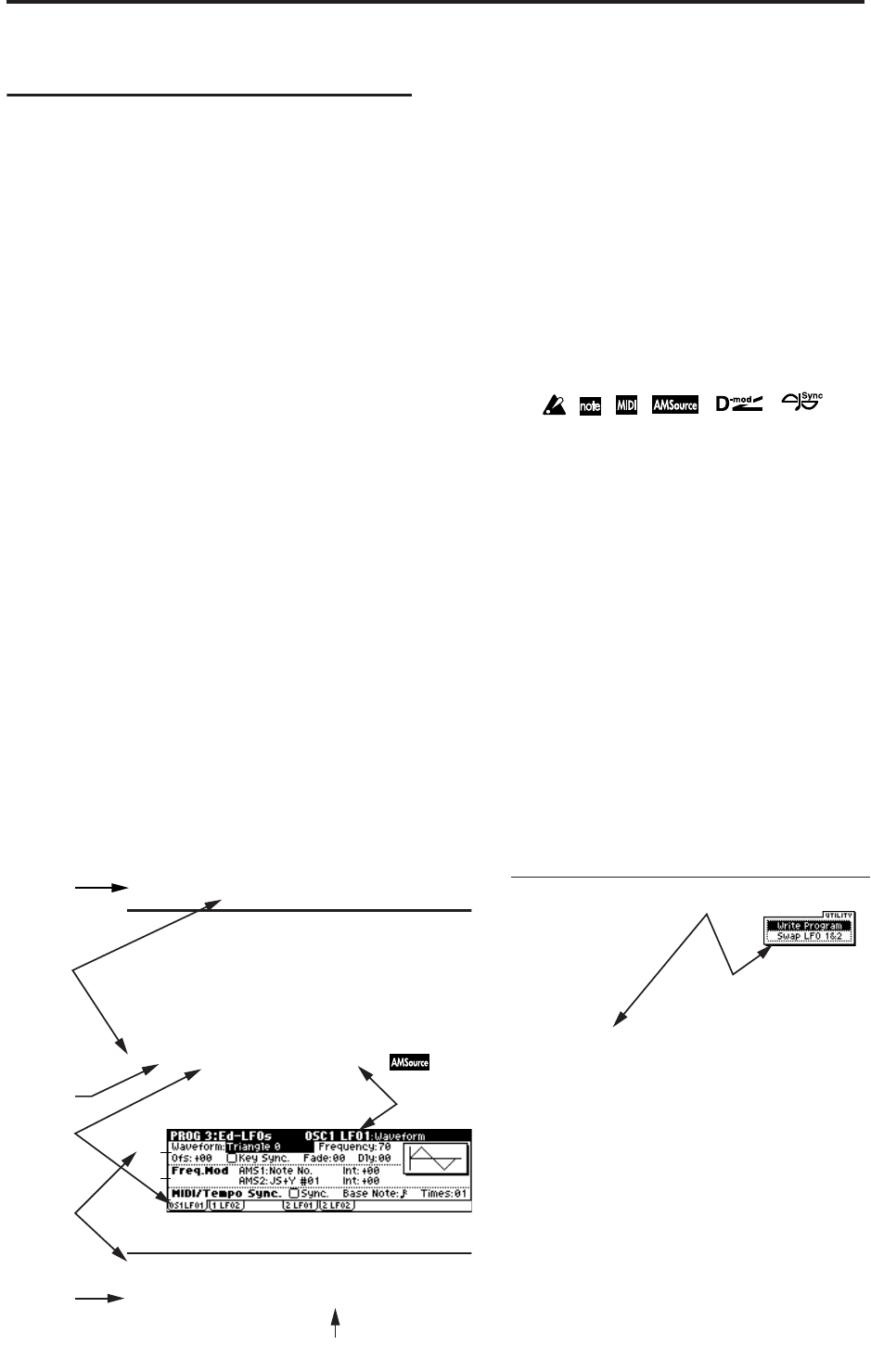
iii
About this manual
This
“Parameter Guide”
contains explanations and other
information regarding the operations of the parameters and
settings on the X50/microX. The explanations are organized
by mode, page, and tab. Explanations and other information
on the effects and their parameters are also provided for
each effect.
Refer to this guide when an unfamiliar parameter appears in
the display, or when you need to know more about a partic-
ular function.
Conventions in this manual
Abbreviations for the manuals, OG, PG
References to the manuals included with the X50/microX
are abbreviated as follows.
OG
: Operation Guide
PG
: Parameter Guide
(
included in the CD-ROM)
Explanations specific to the X50 or microX
This parameter guide is written for both the X50 and the
microX. Explanations that apply only to one or the other
model are preceded by an indication of “
X50:
” or “
microX:
”
in the text.
Switches and knobs [ ]
References to the buttons, dials, and knobs on the X50/
microX’s panel are enclosed in square brackets [ ].
Parameters in the LCD display screen “ ”
Parameters displayed in the LCD screen are enclosed in
double quotation marks “ ”.
Boldface type
Parameter values are printed in boldface type.
Content that is of particular importance is also printed in
boldface type.
Procedure steps
1
2
3
...
Steps in a procedure are listed as
1
2
3
...
☞
p.
■
,
☞
OG p.
■
,
☞■
–
■
From the left, these symbols indicate a reference page in the
Parameter Guide, a reference page in the Operation Guide,
and a parameter number.
Symbols , , , , ,
These symbols respectively indicate cautions, advice, MIDI-
related explanations, a parameter that can be selected as an
alternate modulation source, a parameter that can be
selected as a dynamic modulation source, and a parameter
that can use the BPM/MIDI Sync function.
Example screen displays
The values of the parameters shown in the example screens
of this manual are only for explanatory purposes, and may
not necessary match the values that appear in the LCD
screen of your instrument.
MIDI-related explanations
CC#
is an abbreviation for Control Change Number.
In explanations of MIDI messages,
numbers in square
brackets [ ]
always indicate hexadecimal numbers.
How to read the “Parameter Guide”
(example)
PROG 3: Ed–LFOs
Here you can make settings for the LFO that can be used to
cyclically modulate the Pitch, Filter, and Amp of oscillators 1
and 2. There are two LFO units for each oscillator. By setting
the LFO1 or LFO2 Intensity to a negative (–) value for Pitch,
Filter, or Amp, you can invert the LFO waveform.
3–1: OS1LFO1
(OSC1 LFO1)
Indicates settings for the “OSC1 LFO1,” which is the first
LFO that can be used for oscillator 1.
3–1a: OSC1 LFO1
Waveform [Triangle 0…Random6 (Vect.)]
■ 3–1: UTILITY
☞“Write Program” (0–1)
For details on how to select the desired utility function, refer
to “PROG 0–1: UTILITY.”
Swap LFO 1&2
This exchanges the settings of LFO 1 and 2. If LFO2 is
selected in AMS1 (Freq. AMS1) or AMS2 (Freq. AMS2) of
LFO1 Freq.Mod (3–1b), then these settings will be invalid for
LFO2 after LFO1 and 2 have been exchanged. If you select
this from the OSC1 LFO1 or OSC1 LFO2 page, LFO1 and
LFO2 of OSC1 will be exchanged.
1 Select “Swap LFO 1&2” to access the dialog box.
3–1a
3–1b
3–1c
Mode name
Page No.
Tab No.
Tab name
Parameter
No.
Parameter
name
Page name
Utilty menu
command name
Range of possible parameter values


















